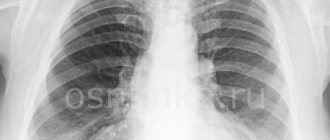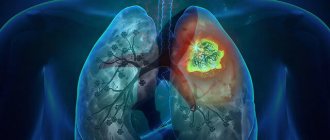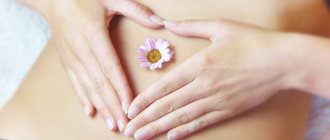Initially, this gymnastics was developed to restore the voice of professional singers. But then it was patented as medicinal and began to be actively used in the treatment of diseases of the respiratory system ALENA PARETSKAYA
Pathophysiologist, immunologist, WHO expert NATALIA SHIROKHOVA Candidate of Medical Sciences, pulmonologist, therapist, allergist-immunologist, deputy chief physician for medical parts in the “SM-Clinic” ALEXEY ZHITO Physician, endocrinologist, cardiologist, head of the therapeutic department of the Moscow clinic, Master of Public Health, member of the European Society of Cardiologists
During the recovery period for pneumonia, the doctor can recommend exercise therapy and breathing exercises by Strelnikova, which helps to quickly restore full health breathing, improves blood oxygen saturation, general condition and mood. However, classes can be carried out only after the body temperature has returned to normal and the breathing rate does not exceed 30 breaths per minute.
Initially, gymnastics is carried out in a hospital, under the guidance of an instructor: the patient, lying down, takes the longest possible breath, during which the instructor performs a light vibration massage - tapping on the chest. This helps in clearing the small bronchi of excess mucus and coughing.
If the pneumonia is unilateral, breathing exercises should initially be performed while lying on the affected side. This will reduce the range of motion of the damaged lung and reduce discomfort.
Important!
If the condition worsens while performing exercises, they must be stopped immediately!
Preparatory complex of breathing exercises
All exercises are first carried out under the supervision of a doctor or exercise therapy instructor, then the patient can perform them independently.
Exercise 1. Relax as much as possible, take 40 to 60 breaths. Breathe calmly, without tension, without rushing.
Exercise 2. Lying on your back, make circular movements with your hands.
Exercise 3. Lying on your back, take a breath, during it, raise both arms above your head at the same time, and as you exhale, smoothly lower them down.
Exercise 4. Consistently, slowly bend your feet back and forth (8 times), while breathing in a normal rhythm.
Exercise 5. Lying on your back, place both hands on your chest. As you inhale, spread your arms out to the sides, placing them parallel to the floor. As you exhale, return your arms to the starting position.
Exercise 6. Lying on your back, place your hands on your waist. Alternately pull one leg and the other towards your buttocks, bending your knees. Do not lift your feet off the bed. During the exercise, breathe calmly and measuredly.
Exercise 7. Bend your elbows, rest your elbows on the surface of the bed. As you inhale, slowly arch your chest upward without lifting your head from the pillow. As you exhale, return to the starting position.
Exercise 8. Relax as much as possible again, take 40 to 60 inhalations and exhalations. Breathe calmly, without tension, without rushing.
Types of breathing
Different exercises for developing the respiratory system focus on different types:
- top. The diaphragm and abdominal muscles are practically not used, breathing is carried out through the upper chest;
- average The diaphragm lowers slightly and the abdominal muscles contract;
- lower The diaphragm is actively involved, while the abdomen is as relaxed as possible;
- complete Provides the maximum amount of oxygen in the lungs by using three sections of the chest;
- the opposite. Due to the tension of the abdomen and the lowering of the diaphragm, the internal organs are slightly compressed, providing a massage effect;
- with delay. Can be performed after inhalation, exhalation, or after each action.
Basic course of breathing exercises
These exercises can be done lying down or sitting in bed, lying on the floor (laying down a mat).
The complex is performed when inflammation in the lungs is already subsiding, controlling well-being. Exercise 1. Starting position – lying or sitting on the bed. Clasp your hands and lift them up. As you inhale, turn your palms outward, and as you exhale, close them again.
Exercise 2. Starting position – lying in bed. Breathe calmly, effortlessly, alternately move your legs to the side, placing them parallel to the floor.
Exercise 3. Repeat the first exercise.
Exercise 4. Starting position – lying or sitting on the bed, hands on your chest. With each hand in turn, while inhaling, reach for any objects that are located outside the bed. As you exhale, return your hands to the starting position.
Exercise 5. Starting position – lying or sitting on the bed, placing both hands on the shoulder area (elbows forward). As you inhale, you need to spread your arms to the sides (as much as possible), and as you exhale, return your arms to the starting position.
Exercise 6. Repeat the first, giving yourself rest.
Exercise 7. Starting position – lying on the bed. Breathe calmly, lift your straightened legs one by one (as far as you can, without straining too much).
Exercise 8. Starting position – sitting or lying on the bed, arms along the body. As you inhale, raise your arms up one by one, placing them behind your head. As you exhale, return your arms to the starting position.
Exercise 9. As you inhale, raise your arms up one by one, placing them behind your head. As you exhale, return your arms to the starting position.
Repeat each exercise 3-4 times. Complete the gymnastics with an intense cycle of inhalation and exhalation (up to 20 - 30 times).
What it is
Breathing exercises are sequential exercises to keep the body in good shape and improve well-being in a number of diseases. Depending on the technique used, it can strengthen bones and ligaments, alleviate the condition after pneumonia and chronic obstructive pulmonary disease, charge with vigor and activity, improve concentration, normalize sleep, etc.
Breathing exercises after coronavirus or another disease associated with changes in lung volume can be prescribed even to bedridden patients. The classes do not require special clothing or equipment; it is enough to spend 15–30 minutes daily to feel an improvement in your overall well-being. When choosing a method for performing breathing exercises, be sure to consult a doctor so as not to cause harm to your health due to contraindications or errors during the implementation process.
Basic course of breathing exercises
These exercises can be done lying down or sitting in bed, lying on the floor (laying down a mat).
The complex is performed when inflammation in the lungs is already subsiding, controlling well-being. Exercise 1. Starting position – lying or sitting on the bed. Clasp your hands and lift them up. As you inhale, turn your palms outward, and as you exhale, close them again.
Exercise 2. Starting position – lying in bed. Breathe calmly, effortlessly, alternately move your legs to the side, placing them parallel to the floor.
Exercise 3. Repeat the first exercise.
Exercise 4. Starting position – lying or sitting on the bed, hands on your chest. With each hand in turn, while inhaling, reach for any objects that are located outside the bed. As you exhale, return your hands to the starting position.
Exercise 5. Starting position – lying or sitting on the bed, placing both hands on the shoulder area (elbows forward). As you inhale, you need to spread your arms to the sides (as much as possible), and as you exhale, return your arms to the starting position.
Exercise 6. Repeat the first, giving yourself rest.
Exercise 7. Starting position – lying on the bed. Breathe calmly, lift your straightened legs one by one (as far as you can, without straining too much).
Exercise 8. Starting position – sitting or lying on the bed, arms along the body. As you inhale, raise your arms up one by one, placing them behind your head. As you exhale, return your arms to the starting position.
Exercise 9. As you inhale, raise your arms up one by one, placing them behind your head. As you exhale, return your arms to the starting position.
Repeat each exercise 3-4 times. Complete the gymnastics with an intense cycle of inhalation and exhalation (up to 20 - 30 times).
How to build a lesson
Start with 5-10 repetitions of each exercise and gradually increase this number as you adapt. If you feel very weak, reduce the number of repetitions.
Follow this program every other day.
Move smoothly, try to breathe deeply and evenly.
Monitor your well-being. “The following symptoms should alert you: shortness of breath, cough, pain in the chest and intercostal space, increased frequency of respiratory movements (RR). Normally there should be from 16 to 20 breaths per minute, if there are more than 30, this is a cause for concern,” says Andreas Stromberger.
Before starting training, consult your doctor.
To perform the complex, you will need a chair and a low-resistance expander band.
Strelnikova’s gymnastics for home, during the rehabilitation period
When your health allows, you need to do a full course of gymnastics at home.
When exercising, breathe actively, sharply, through your nose, exhale passively through your mouth. The duration of classes is up to half an hour; in exercises from the second to the 12th, 8 breaths are taken in a row. Exercise 1: Palms. Stand up straight, bend your elbows, and hold them in front of your chest with your palms facing up. Take 4 deep breaths while clenching your palms into fists. Lower your arms, rest for 4 - 5 seconds, exhaling freely through your mouth. Repeat 24 times.
Exercise 2: Shoulder straps. Stand up straight, clench your palms into fists and press them to your stomach. As you inhale, press your fists down, tensing your shoulder muscles; as you exhale, return your hands to the starting position, relaxing the muscles. Take 8 such breaths in a row, then relax for 4 - 5 minutes.
Exercise 3: Pump. Stand straight with your feet shoulder-width apart and extend your arms along your torso. Bend forward, stretching your arms towards the floor, but do not touch it. At the same time as you bend, inhale, exhaling as you straighten your back. Do not straighten your back completely. Such tilts need to be done 50 - 100 times within a minute.
Exercise 4: Cat. Stand straight with your feet slightly apart. Squat slightly, turn to the right, taking a sharp breath. Return to the starting position. Then repeat the movement in the other direction. When turning with your hands, make grabbing movements. Keep your back straight, moving only at the waist.
Exercise 5: Shoulder Hugging. Stand up straight, bend your elbows, raise them to crying level. Take a sharp breath, wrapping your arms around your shoulders, placing your arms parallel to each other. Do 4 sets with rest.
Exercise 6: Large pendulum. Stand straight with your feet wider than shoulder-width apart. Lean forward, stretch your arms towards the floor, taking a deep breath, then return to a similar position, hugging your shoulders with your arms and inhaling again.
Exercise 7: Head turns. Stand up straight with your feet slightly apart. Turn your head to the right as you inhale, return to the starting position as you exhale, then to the left as you inhale. Exhale smoothly and inhale more sharply.
Exercise 8: Ears. Stand up straight, legs slightly apart. Tilt your head to the right, towards your shoulder, touching it with your ear as you inhale, and as you lift your head, exhale. Repeat with the other shoulder.
Exercise 9: Pendulum with your head. Stand straight, legs slightly apart, tilt your head forward and look at the floor as you inhale, return to the starting position as you exhale. Then repeat, throwing your head back as you inhale.
Exercise 10: Rolls. Stand up straight, with your left leg slightly forward and your right leg slightly back. Transfer your body weight to your left leg, bend your right leg and place it on your toe. Squat down on your left leg while inhaling deeply. Straighten your leg and transfer your body weight to your right, squat on it with a sharp inhalation.
Standing body bends
Stand facing the wall at a distance of 20-25 cm from it, stretch your arms up, press your palms tightly against the wall. Lean your body forward slightly, opening your chest, and relax your lower back. Gently lean your body to the left, bending your left arm, and with your straightened right arm, describing a semicircle along the wall. Then just as smoothly lean to the right, bending your right arm and describing a semicircle along the wall with your left. This is one repetition. Perform 5-10 repetitions of the exercise.
While doing gymnastics, observe your sensations. If your health allows, you can increase the number of repetitions. If you feel weak, reduce it.
Reviews from doctors about Strelnikova’s breathing exercises
Natalya Shirokhova, pulmonologist:
– Breathing exercises according to Strelnikova is a non-drug method of therapy, which is based on taking short intermittent breaths through the nose and passive exhalations through the nose or mouth. Breathing exercises help increase gas exchange in the lungs. Her techniques help saturate the body with oxygen, prevent the formation of fibrosis in the lung tissue, and strengthen the respiratory muscles.
Although the method is positioned as universal for healing many organs and systems, it is most often used by pulmonologists. The first on the list of indications for this gymnastics are lung diseases: bronchitis, bronchial asthma and pneumonia.
Most of the studies and observations, including in my practice, on the effectiveness of breathing exercises were carried out in patients with obstructive pulmonary diseases, which include chronic bronchitis and bronchial asthma. In these patients, as a result of systematic therapy, external respiratory function significantly improved, the frequency of asthmatic attacks decreased, and cough relief was noted.
Alexey Zhito, general practitioner, cardiologist:
– Strelnikova’s breathing exercises are, of course, an important component in the complex treatment of pneumonia and recovery from it. This set of exercises has also demonstrated high effectiveness in treating patients with new coronavirus infection.
These exercises improve the drainage function of the lungs, blood circulation in damaged areas of the lungs, prevent the formation of “non-functioning” areas of the lungs - atelectasis, and strengthen general and local nonspecific immunity. The complex rehabilitation potential of exercise helps to normalize the cardiovascular system, improve blood pressure, glycemia (blood glucose) levels and reduce body weight.
Strelnikova’s breathing exercises have a pronounced positive effect on the course of pneumonia and rehabilitation after it. This is especially true in the context of the new coronavirus infection.
But it has relative contraindications:
- marked increase in blood pressure (150/90 mmHg);
- low blood pressure (below 90/60 mm Hg);
- high (above 13 mmol/l) and low (below 3.9 mmol/l) blood sugar levels;
- bleeding of various locations in the recent past;
- chest and upper belt injuries;
- uncompensated thyrotoxicosis;
- temperature above 37.5 °C.
However, most of them are temporary, and as soon as the problems are eliminated, gymnastics can be carried out.
There are some features of this gymnastics for certain groups of patients:
- people at high risk of falls need to reduce this risk as much as possible;
- for radiculopathy of the cervical and thoracic spine, the sharpness and amplitude of movements must be limited.
Similar restrictions are possible for patients with increased intraocular and intracranial pressure.
To exclude contraindications, consult with your doctor before starting Strelnikova gymnastics.
What loads are allowed for pneumonia?
Forget about classic fitness! Whatever the cause of your illness (a complication of the flu or coronavirus), you cannot train until you have fully recovered. “Sports activities for pneumonia are strictly contraindicated, but physical therapy is recommended: it speeds up the healing process,” says Andreas Stromberger, head of the rehabilitation department at the Center for Congenital Pathology, a specialist in manual therapy and physiotherapy at the GMS Clinic.
Active sports training can aggravate the course of the disease. But you shouldn’t give up movement completely: as your condition improves (weakness gradually goes away, breathing becomes easier) and after consulting a doctor, you can start doing breathing and rehabilitation exercises. “When to start exercise depends on the severity of the disease: the more severe and prolonged it is, the more time it takes to recover,” notes Andreas Stromberger. - Be patient".
The right exercises will help speed up your recovery. “The integrated use of exercise therapy tools and methods that affect the main mechanisms of disease development will help reduce recovery time,” adds Yesenia Kalyuzhina, a rehabilitation specialist at the SportMedica sports medicine clinic.
What do such exercises give? “They train the physiological patterns of exhalation and inhalation, strengthen the respiratory muscles, improve the function of healthy lung tissue and counteract the occurrence of adhesions,” reminds Yesenia Kalyuzhina.
Plus, such a light load increases the overall tone of the body, which is also important during the recovery period after pneumonia.⠀
Emphysema concept
Pulmonary emphysema is usually understood as a chronic disease, which is characterized by the expansion of small bronchioles and the gradual destruction of the partitions between the alveoli. As a result, air-filled voids are formed in the lungs, and the organ itself swells to large sizes. Among the causes of this condition, doctors name smoking, obstructive bronchitis, and inhalation of polluted air.
It manifests itself in the form of shortness of breath and a constant cough with little sputum production. Over time, the chest begins to swell and take on a barrel-shaped shape. According to statistical information, about 4% of the world's inhabitants have emphysema.
Recovery after Covid: video
Perform one or more complexes at a time convenient for you. If possible, it is better to train outdoors or in a well-ventilated area.
- A set of breathing exercises after Covid.
- Exercises for morning exercises or warm-up before training.
- A set of exercises for those who suffer from pneumonia or “corona”.
Don't skip classes and don't rush through them. You should not start training immediately after eating or drinking heavily; before gymnastics, get rid of tight clothes.
Lung training for coronavirus: indications and contraindications
Doctors call body temperature above +38°, as well as fever, the only contraindication to exercise. According to a number of opinions, you should refuse training if you feel unwell, dizziness, nausea. There are no direct indications for performing the training - it will be useful for every group of participants:
- People with healthy lungs can perform gymnastics for prevention;
- Athletes often train to increase lung capacity, which provides an endurance advantage regardless of the discipline being practiced;
- For diseases of the respiratory tract, lungs or cardiac system, therapeutic exercises improve bronchial patency.
Those who seriously care about their health are recommended to include breathing exercises in their morning exercises or perform them before training in the gym.
Why do we need a diaphragm?
More often we breathe incorrectly: through the chest, without involving the stomach in this process. By including the diaphragm in the breathing process, on the one hand, we normalize the respiratory function and saturate the body with oxygen and energy, and on the other, we reflexively improve the condition of the locus coeruleus in the brain, thereby relieving the stress load. And at the same time we also improve overall health, because the diaphragm from below supports the heart, liver and spleen, and the back part is adjacent to the kidneys and adrenal glands. Therefore, her coordinated work massages our “motor” and other vital organs on which health and immunity depend.







